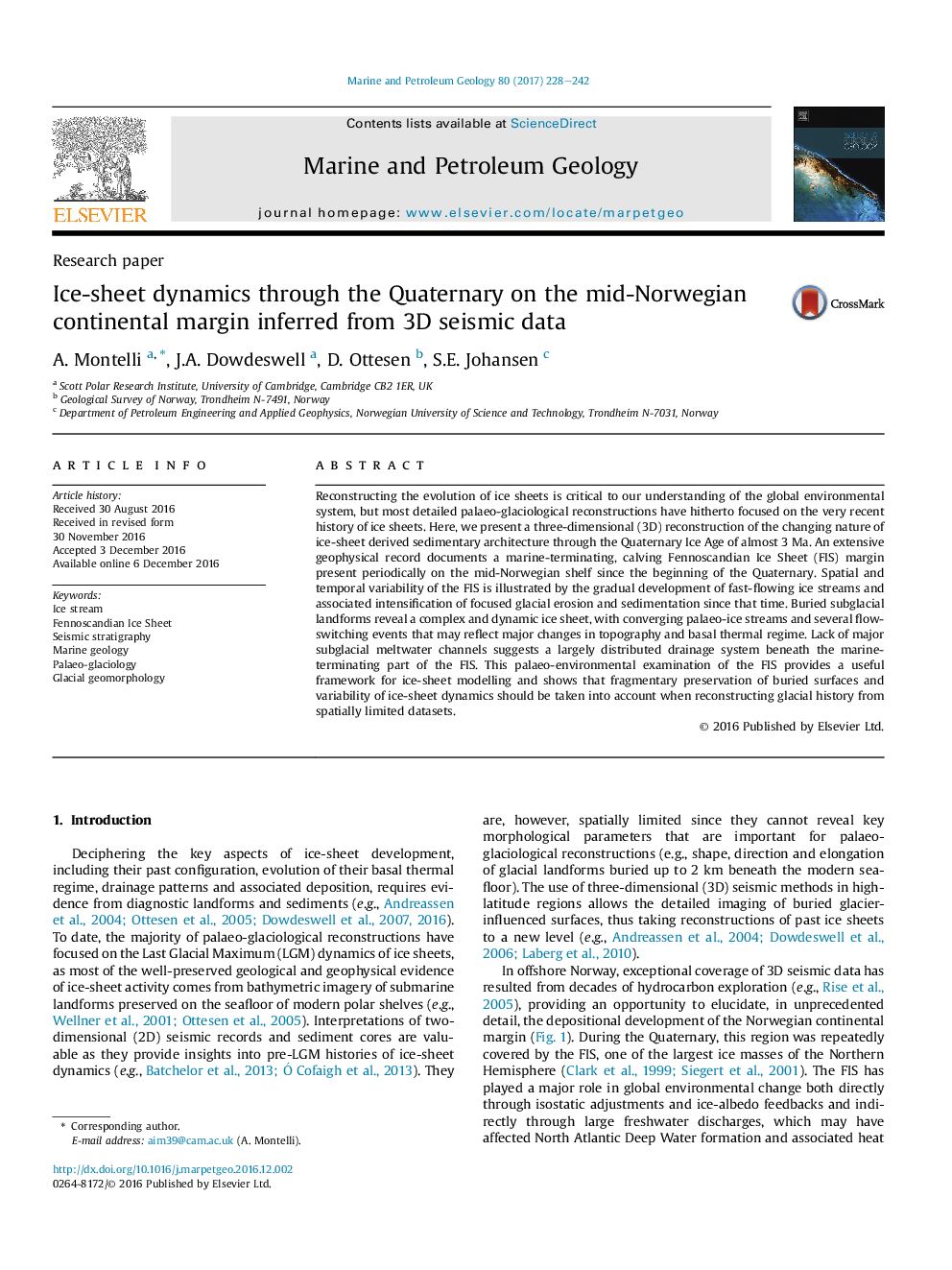| Article ID | Journal | Published Year | Pages | File Type |
|---|---|---|---|---|
| 5782205 | Marine and Petroleum Geology | 2017 | 15 Pages |
Abstract
Reconstructing the evolution of ice sheets is critical to our understanding of the global environmental system, but most detailed palaeo-glaciological reconstructions have hitherto focused on the very recent history of ice sheets. Here, we present a three-dimensional (3D) reconstruction of the changing nature of ice-sheet derived sedimentary architecture through the Quaternary Ice Age of almost 3 Ma. An extensive geophysical record documents a marine-terminating, calving Fennoscandian Ice Sheet (FIS) margin present periodically on the mid-Norwegian shelf since the beginning of the Quaternary. Spatial and temporal variability of the FIS is illustrated by the gradual development of fast-flowing ice streams and associated intensification of focused glacial erosion and sedimentation since that time. Buried subglacial landforms reveal a complex and dynamic ice sheet, with converging palaeo-ice streams and several flow-switching events that may reflect major changes in topography and basal thermal regime. Lack of major subglacial meltwater channels suggests a largely distributed drainage system beneath the marine-terminating part of the FIS. This palaeo-environmental examination of the FIS provides a useful framework for ice-sheet modelling and shows that fragmentary preservation of buried surfaces and variability of ice-sheet dynamics should be taken into account when reconstructing glacial history from spatially limited datasets.
Related Topics
Physical Sciences and Engineering
Earth and Planetary Sciences
Economic Geology
Authors
A. Montelli, J.A. Dowdeswell, D. Ottesen, S.E. Johansen,
